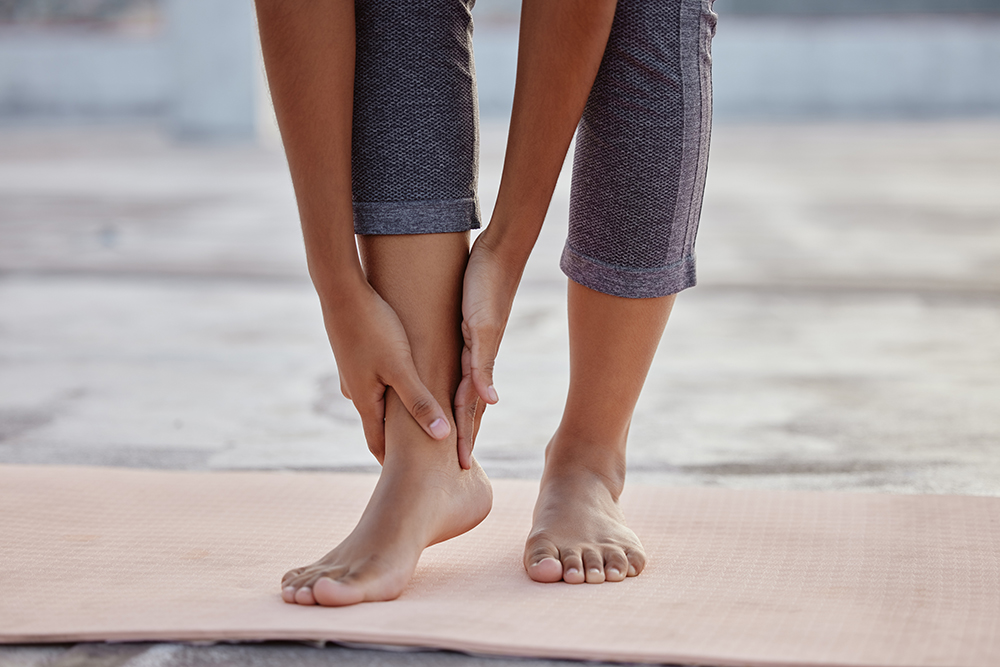Contents
The arch of your foot is a small but vital part of your body. It goes from the base of your toes to your heel and is vital for balance, weight bearing, and even shock absorption while walking. Even mild pain in your foot can make it difficult to move and engage in everyday activities, and foot pain is more common than you might think. Around 1 in 5 people report dealing with symptoms of foot pain, achiness or stiffness.
If you’re dealing with pain in the arch of your foot when you walk, it may not go away on its own. Physical therapy can help you address foot pain and get you back on track to live an active life.
Physical therapy treatments for pain in the arch of your foot
There are many different physical therapy treatments that can help ease pain in the arch of the foot. Stretches, exercises and other hands-on therapy treatments may offer pain relief and can help you rebuild the muscles you need to keep the pain away. Let’s take a look at some common physical therapy methods that your physical therapist may use to help your foot arch pain:
- Manual therapy — Manual therapy is one of the main methods of physical therapy. Your physical therapist will use hands-on techniques to help stretch and strengthen different areas of your foot to relieve pain. The goal of manual therapy is to increase mobility and movement in the foot, which can decrease pain in your arch. Some physical therapists have a Certification in Orthopedic Manual Physical Therapy (COMT). This is a postgraduate speciality program that focuses on manual therapy techniques. At Lattimore PT, we have 30 fully certified COMTs who can use specialized manual therapy techniques to help you address your arch pain issues.
- Joint mobilization — This type of mobilization is a manual therapy that targets specific joints in the foot. Your physical therapist can use joint mobilization to stretch and manipulate your foot with the goal of decreasing pain and pressure on the arch, as well as improving mobility.
- Therapeutic exercises — Certain exercises and stretches are targeted for conditions like plantar fasciitis and other foot issues that can cause pain in the arch of the foot. Gentle exercise can help improve mobility and decrease tightness, stiffness and pain in the arch area of the foot.
- Kinesiology taping — Kinesiology taping uses special tape to help stabilize and support different areas of the body. For pain in the arch of the foot, kinesiology tape can be applied to the bottom of your foot to help reduce pressure and support your arch. The goal of this is to temporarily relieve pain and pressure so it’s easier for you to stretch and move your foot.
These are just a few of the techniques that can help you deal with your pain in the arch of the foot. Special inserts may also help you deal with arch pain, and your physical therapist can work with you to design a treatment plan that fits your specific needs and limitations.
Causes of pain in the arch of your foot
Many different things can cause pain in the arch of the foot. Overuse, structural issues within the foot, and inflammation in the tissue of the foot can cause arch pain. Let’s take a look at some of the most common causes of pain in the arch of the foot and how they may affect you:
- Plantar fasciitis — Plantar fasciitis is one of the most common causes of foot arch pain. The plantar fascia is the ligament that connects the heel to the front of your foot, and when that ligament gets inflamed or injured it can cause pain in the arch of the foot. If you’re dealing with plantar fasciitis, you may experience pain and stiffness in the heel and arch of your foot. This pain is usually worse upon waking, with prolonged standing, or after being on your feet a lot.
- Posterior tibial tendon dysfunction (PTTD) — Also called adult-acquired flatfoot, PTTD occurs when the posterior tibial tendon gets injured or becomes inflamed. This tendon connects the inner foot to one of the calf muscles, and if that tendon can no longer support the arch, it may cause arch pain. Arch pain with PTTD will likely run from the back of the calf through the arch of the foot and usually occurs during activities like running.
- Overpronation — The way a person’s foot moves when they walk can cause overpronation to occur. Someone who overpronates walks in a way that makes the outside edge of their heel hit the ground first, which causes the foot to roll too far forward into the arch. Over time, this can make the arch of the foot flatten, causing damage to muscles, tendons and ligaments. With overpronation, you may also experience pain in your knees, hips or back along with corns, calluses or hammertoe.
- Cavus foot — If your foot has an overly high arch, you may have cavus foot. This can be a genetic abnormality or caused by neurological conditions such as cerebral palsy, stroke or Charcot-Marie-Tooth disease. If you have cavus foot, you may experience pain while walking or standing, and you can have other symptoms such as hammertoe, claw toe, calluses and a higher likelihood of ankle sprains.
No matter what’s causing pain in the arch of your foot, Lattimore Physical Therapy can help. You don’t have to deal with arch pain all on your own. Contact our team today for more information on how our licensed physical therapists can treat your arch pain.


